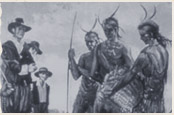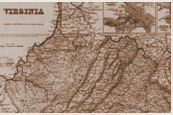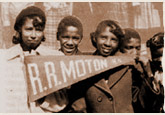The New Americans (Timeline)
PBS: The New Americans (Film and Web Project)
The New Americans (Personal Stories)
PBS: The New Americans (Film and Web Project)
Description: These paired resources allow students to explore the notion that the United States is basically a "nation of immigrants." The timeline helps to set the most recent wave of immigration in a historical context, while the individual stories of newcomers personalize the immigrant experience in an interesting and captivating way.
Teaching Tips:
"Do Now" Suggestion
- There are a number of personal stories of immigrants on the website. Students can pick a story (either from a person who comes from a similar background or from a person who has a different background), read it and compare it to their own family's experience. To prepare students for this activity, the teacher should have students talk to their parents about their family's immigration history the previous night for homework.
- After students have examined the interactive timeline on the site, which highlights major immigration history and policy as well as the immigration of key historical figures, the students can create their own class immigration timeline. Each member of the class can contribute the immigration history of their family, along with a photograph/image and/or story. The final product could be a large poster, a long timeline running around the room, or a website. There is also a link on the website to a number of additional lesson plan ideas.



